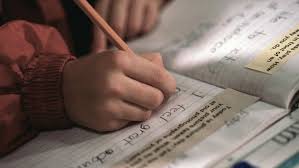How to Spot Dyscalculia
When math difficulties mean something more
by Rae Jacobson

Lots of kids struggle with math, but for some the difficulties go beyond a little bit of frustration. If your child’s math troubles are serious — and persistent — they may be a sign of a learning disorder called dyscalculia.
What is dyscalculia?
Dyscalculia is a term used to describe specific learning disabilitiesthat affect a child’s ability to understand, learn, and perform math and number-based operations.
How common is it?
Though research on prevalence is limited, it’s estimated that between 5 and 7% of elementary school aged children may have dyscalculia. It’s also currently thought that dyscalculia occurs equally in both genders.
Are all math difficulties caused by dyscalculia?
No. Not all difficulties in math class — even serious ones — are caused by dyscalculia. Disorders like dyslexia, visual or auditory processing, ADHD, and others can also impact a child’s ability to meet expectations in completing math problems. It’s also possible for kids who do have dyscalculia to have other learning disabilitiesas well. Many do.
What to look for
- A young child with dyscalculia may:
- Have difficulty recognizing numbers
- Be delayed in learning to count
- Struggle to connect numerical symbols (5) with their corresponding words (five)
- Have difficulty recognizing patterns and placing things in order
- Lose track when counting
- Need to use visual aids — like fingers — to help count
- And as math becomes a major part of the school day, kids with dyscalculia are likely to:
- Have significant difficulty learning basic math functions like addition and subtraction, times tables and more
- Be unable to grasp the concepts behind word problems and other non-numerical math calculations
- Have difficulty estimating how long it will take to complete a task
- Struggle with math homework assignments and tests
- Have difficulty keeping at grade-level in math
- Struggle to process visual-spatial ideas like graphs and charts
The impact of dyscalculia doesn’t stop when math class ends. The disorder can also affect kids outside of school. Children with dyscalculia also:
- Have trouble remembering numbers such as zip codes, phone numbers, or game scores
- Struggle with money matters such as making change, counting bills, calculating a tip, splitting a check or estimating how much something will cost.
- Have difficulty judging the length of distances and how long it will take to get from one location to another
- Struggle to remember directions
- Have a hard time telling left from right
- Get easily frustrated by games that require consistent score keeping, number strategies or counting
- Have difficulty reading clocks and telling time
A noticeable gap
The biggest sign of a specific learning disorder is a notable discrepancy between ability and aptitude. A kid with dyscalculia may preform well in other subjects — such as English or history — but have very low grades in math and math-based classes.
What’s the proper name for dyscalculia?
In the DSM-5, dyscalculia is called “specific learning disability with impairment in mathematics,” but “dyscalculia” is still an accepted term and is used by schools and learning specialists.
How is dyscalculia diagnosed?
There is no specific test for dyscalculia. Taking the following steps can help you get your child the help and accommodations he needs.
- Visit your doctor: Rule out any medical issues such as hearing or vision impairment that could be impacting your child’s learning process.
- Consult with your teacher: Ask your child’s math teacher to note the areas where he has the most trouble, and any and all strategies that help.
- Ask about other areas: It’s estimated that as many as half of kids with dyscalculia also have another learning issue. Understanding your child’s complete learning profile will help you advocate for his needs
- Consult a specialist: Once you’ve done the groundwork, talk to a learning professional who can evaluate your child and give you specific feedback on how to help.
- Original Here
-
Post-Traumatic Stress Disorder Basics by Child Mind Institute
How to Help Anxious Kids in Social Situations by Katherine Martinelli
Anxiety in the Classroom by Rachel Ehmke
The Benefits Of Unsupervised Play Will Make You Want To Back Off Your Kids' Activities In A Big Way by Katie McPherson
How to Avoid Passing Anxiety on to Your Kids by Brigit Katz
3 Defining Features of ADHD That Everyone Overlooks by William Dodson, M.D.
Should emotions be taught in schools? by Grace Rubenstein
Why Do Kids Have Trouble With Transitions? by Katherine Martinelli